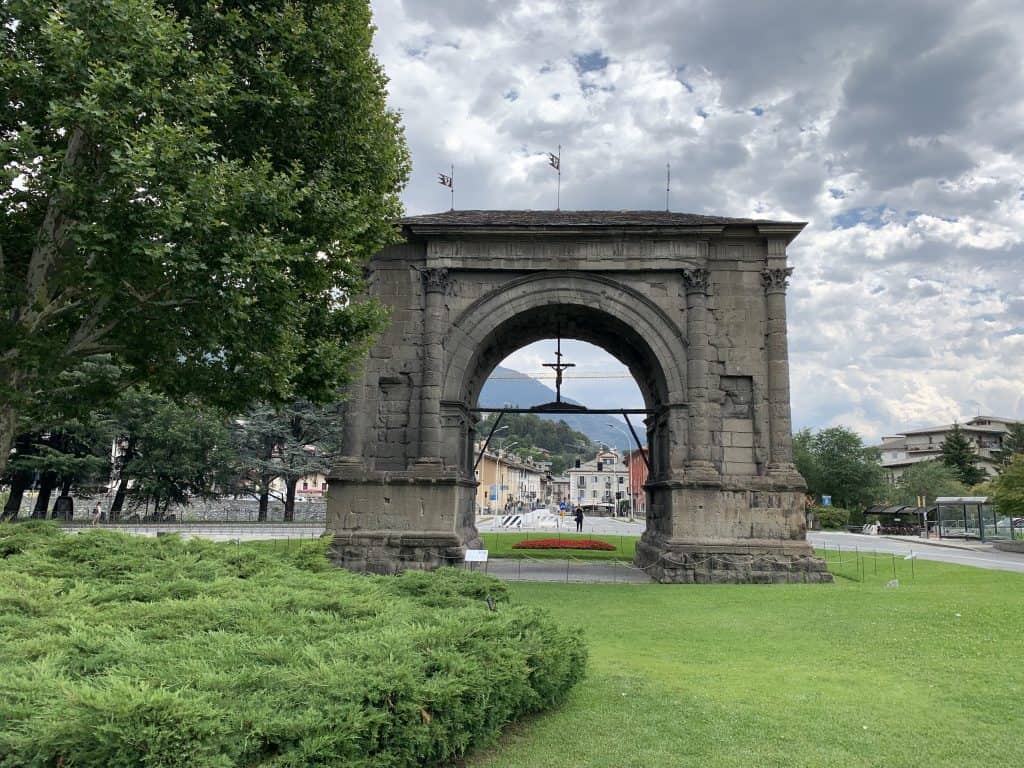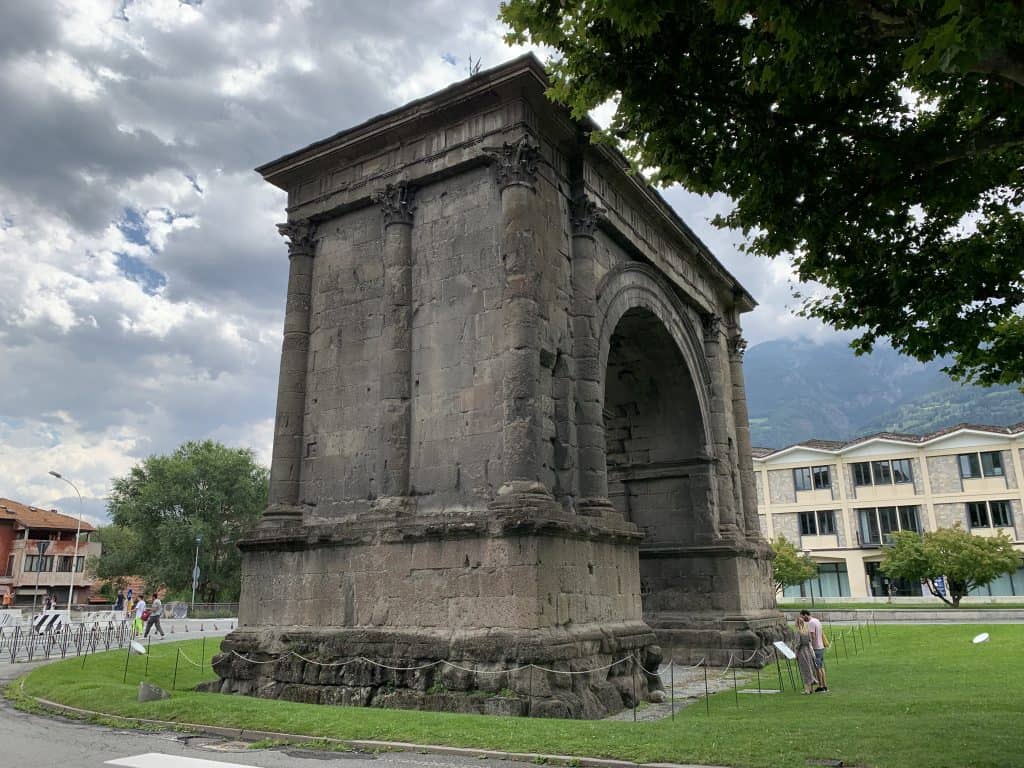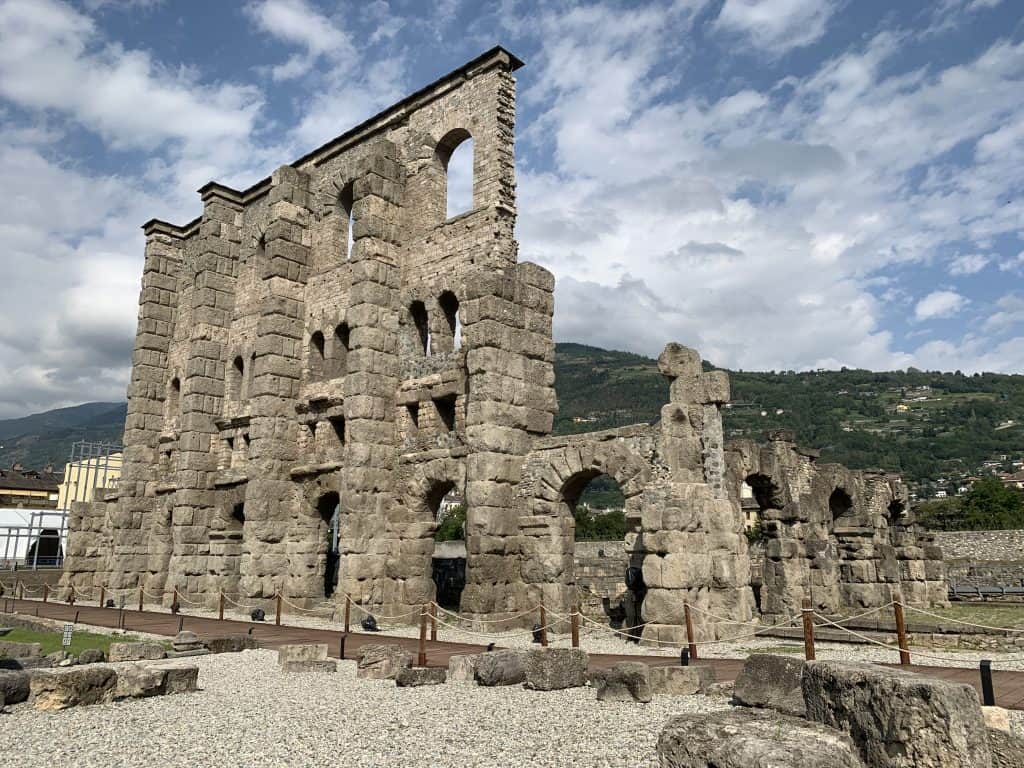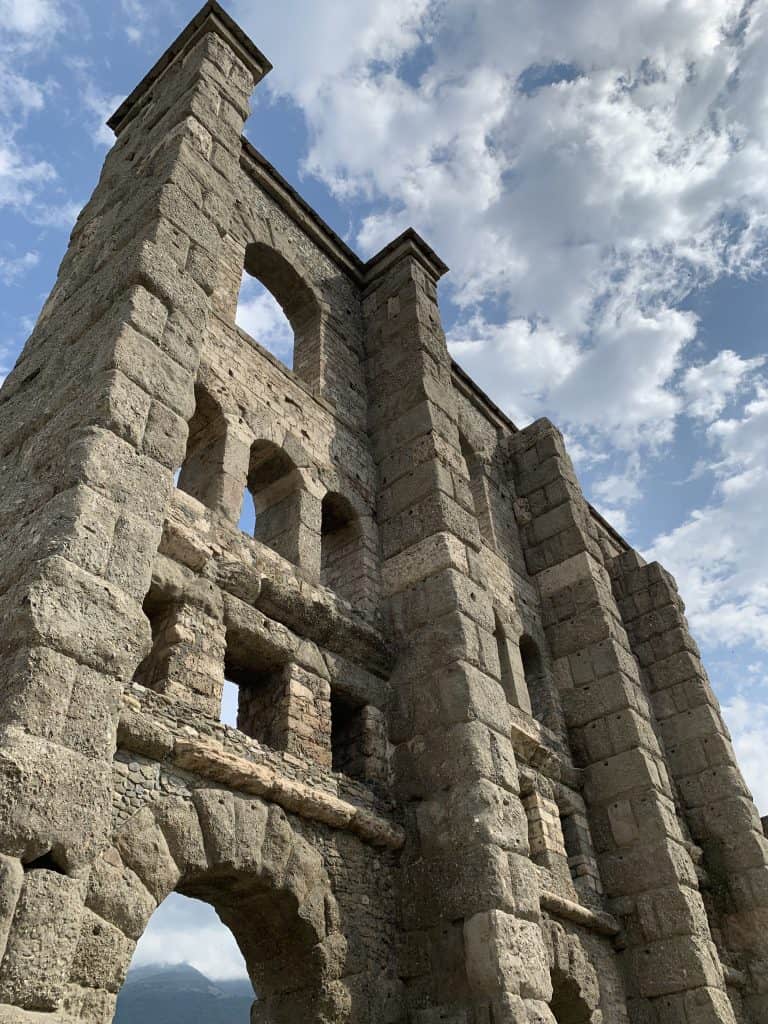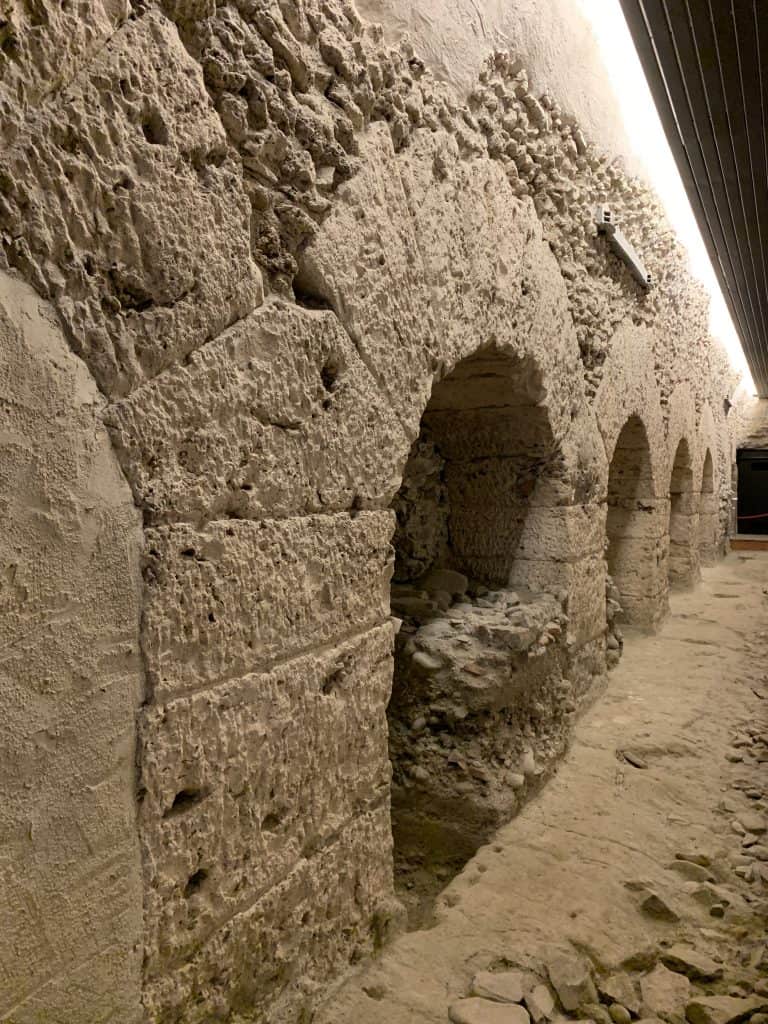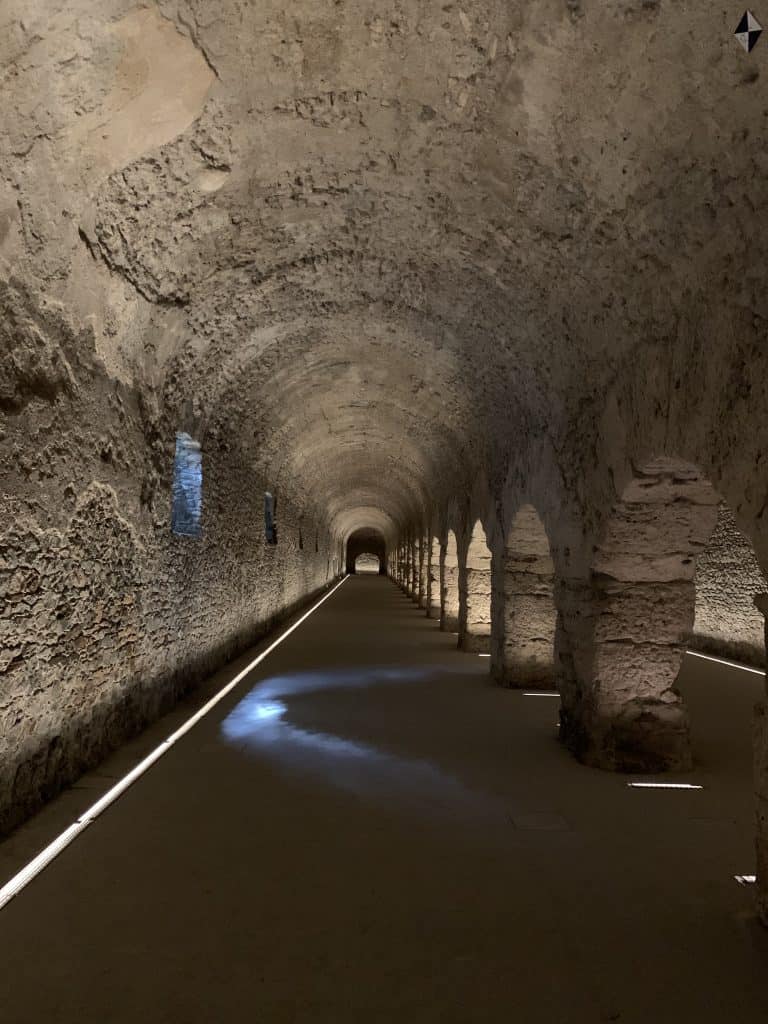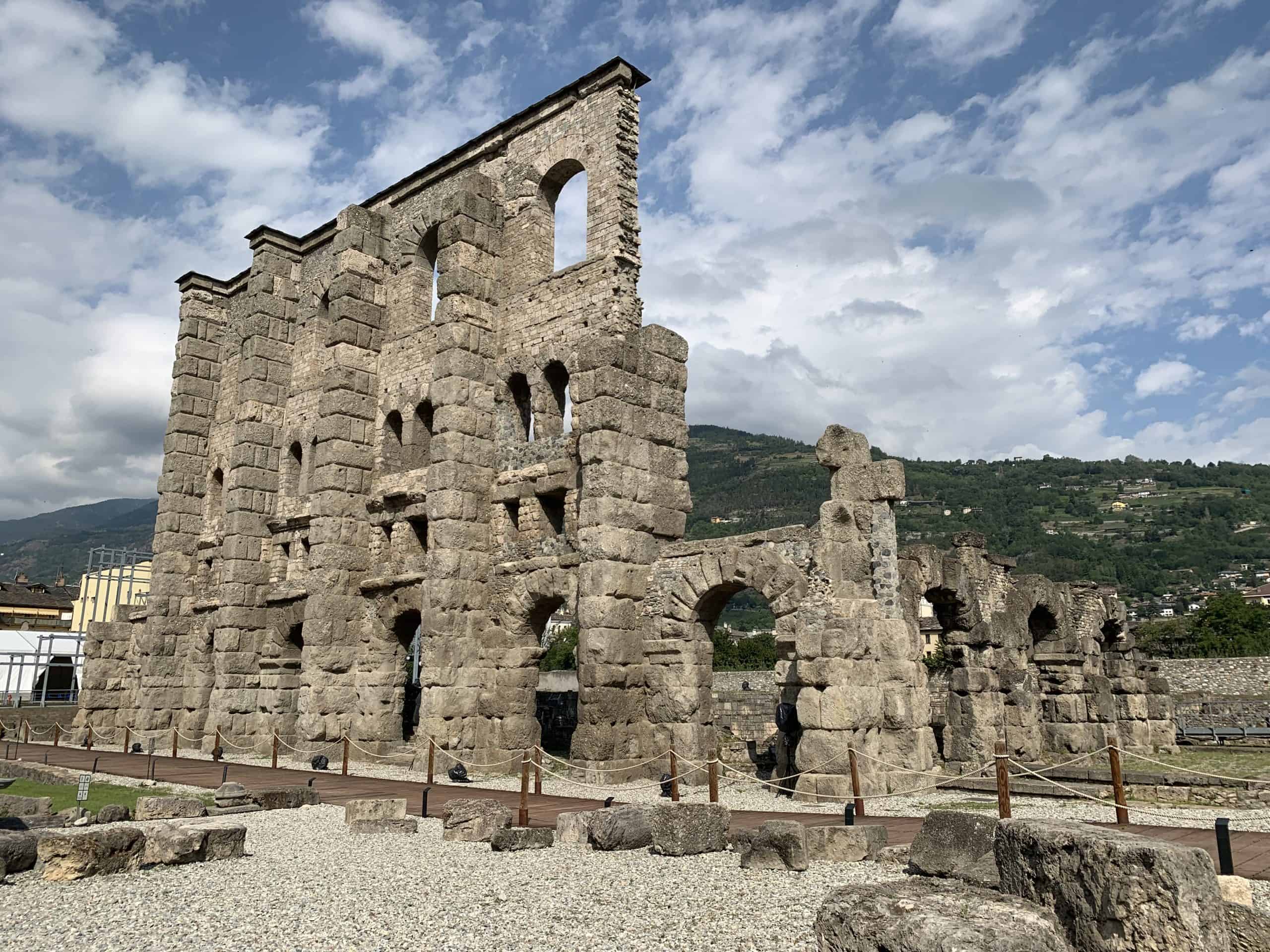
Aosta is the capital of the Autonomous Region of Valle d’Aosta
Inhabited since protohistoric times, it then became a Roman outpost thanks to its strategic position that allowed to defend the Alpine territories from barbarian invasions.
Aosta is a city rich in history and unique architectural finds such as the Porta Pretoria, the eastern entrance to the city built in 25 a.C. The Arch of Augustus dates back to the same period, symbol of the city in Doric and Corinthian style, located at the entrance of the historic center of the city.
The great importance of the city in Roman times is then confirmed by the great Roman Theater that could accommodate up to 4,000 spectators.
The Forensic Cryptoporticus of Aosta is one of the most representative monuments of the glorious Roman past of Aosta and is recognized as an Italian national monument.
Consisting of a marble gallery closed on three sides, the forensic cryptoporticus had an important structural function: it served to regularize the difference in height of the area and was the junction point of two temples, dedicated respectively to the Emperor Augustus and the triad of Jupiter, Juno and Minerva.


